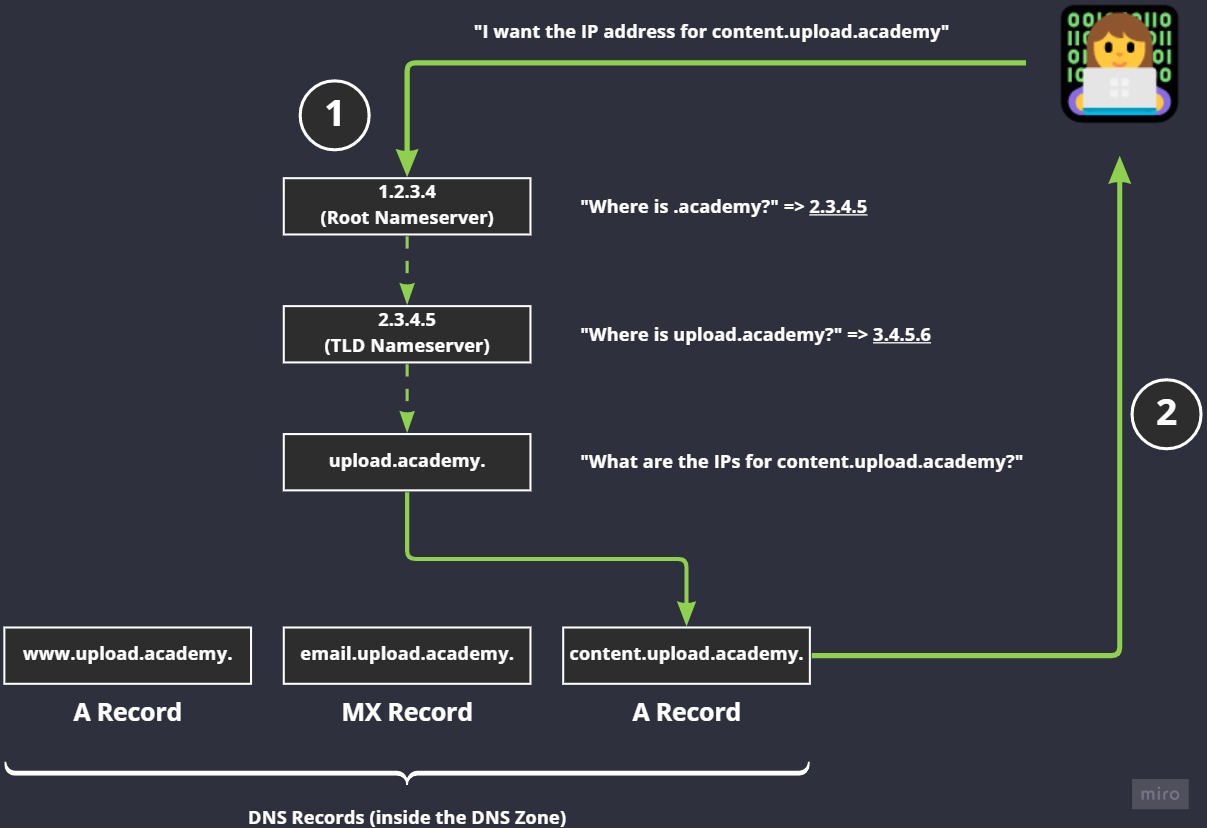Nameservers#
The term, "nameserver" has been thrown about a lot. What does it mean?
A nameserver is a DNS server that holds DNS records for a given part of the DNS system.
At the root level (.) is the root nameserver, which contains DNS records for all of the global TLD nameservers (academy, com, edu, etc.) The root nameserver does not contain any information about the TLD except where to find the IP address(es) of the nameservers that manage the TLD.
Then we have the TLD nameserver that represents and manages DNS records for the authoritative nameservers like upload, google, linkedin, etc. This nameserver knows where the authoritative nameserver is located (it's IP address) and is the final part of the DNS lookup process.
Finally, the authoritative nameserver knows all of the records for the DNS zone.
Visually this might look like this:


Authoritative Nameserver#
Finally let's talk about the authoritative nameservers.
These are responsible for managing all the DNS records that represent a domain name. For upload.academy, for example, we might have the following records:
| Record Type | Hostname | IP Addresses |
|---|---|---|
A | upload.academy | 1.2.3.4, 2.3.4.5 |
CNAME | www.upload.academy | upload.academy |
MX | mail.upload.academy | 3.4.5.6 |
And so on.
These records are looked up by DNS clients, at the request of things like web browsers, so that the final result, usually an IP address, can be obtained and used to make a connection to a remote system in another network (using TCP, UDP, etc.)
These zones are managed by the entity, a person or an organisation, that owns the domain name. They can create whatever records they like and then can return whatever IP addresses they like. Or none at all.